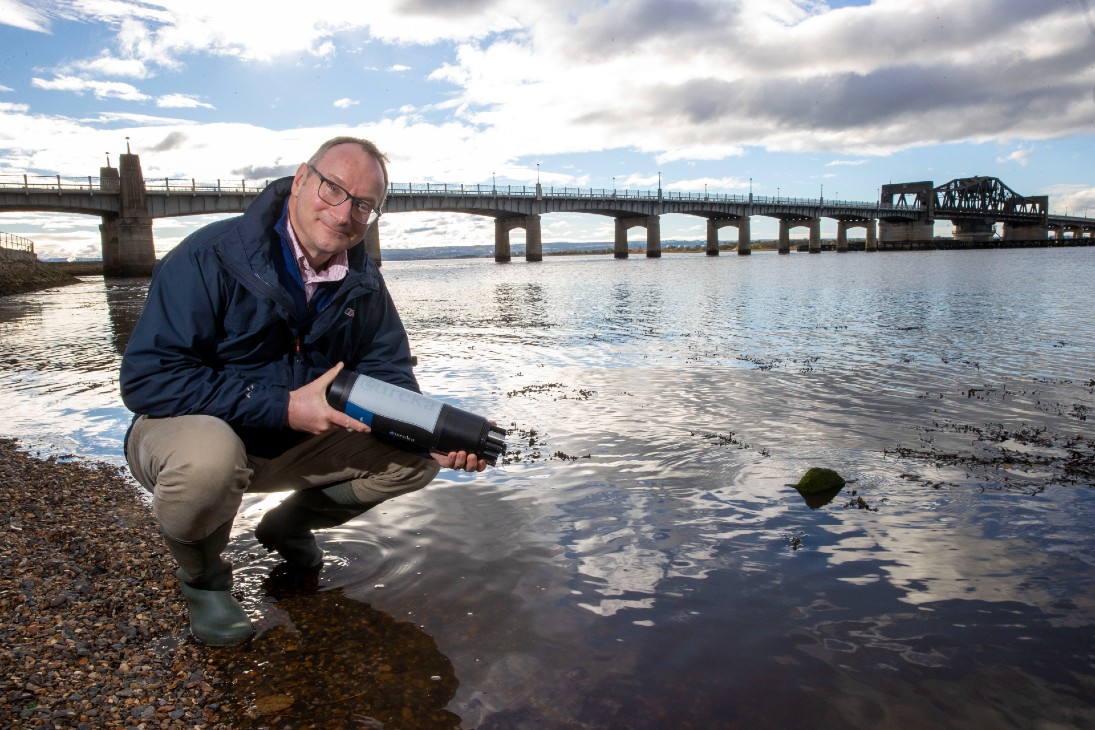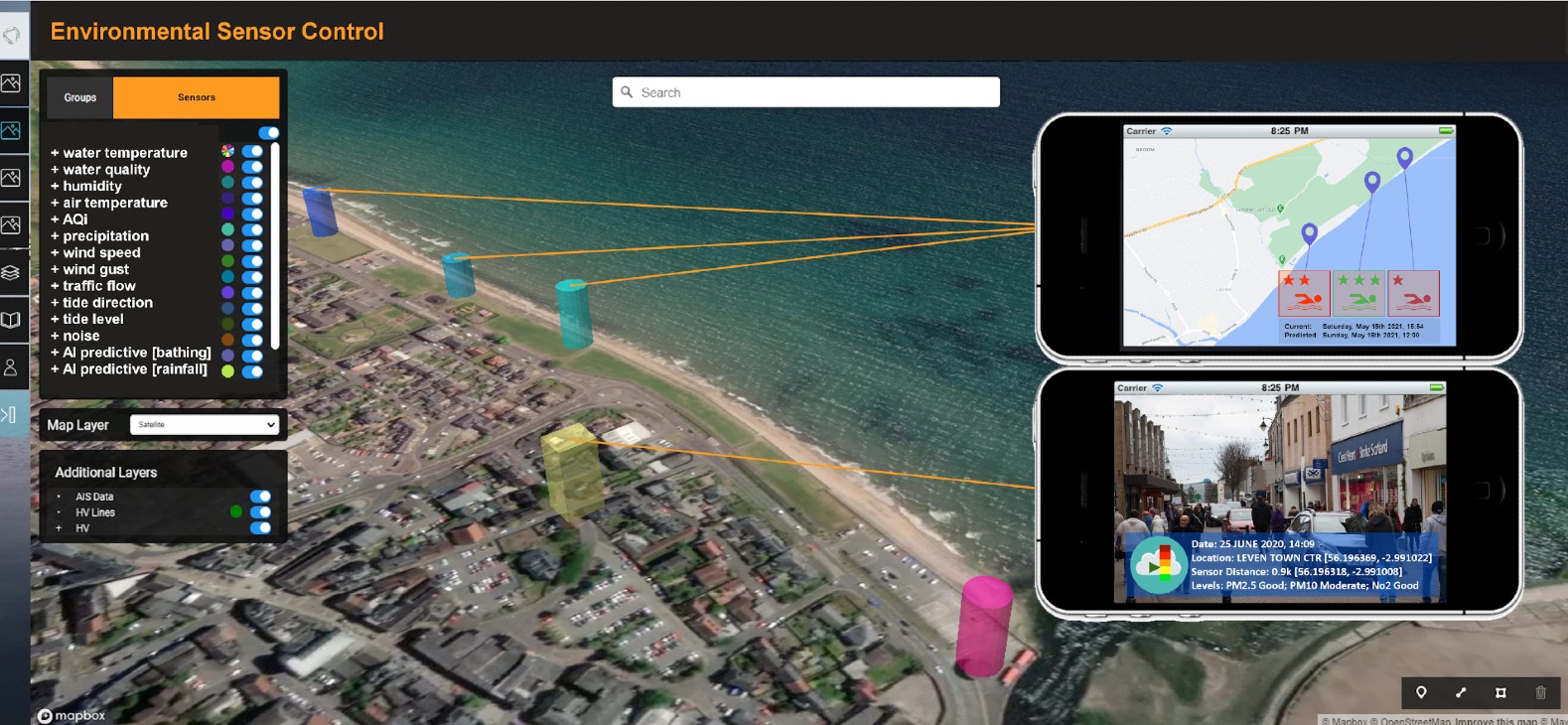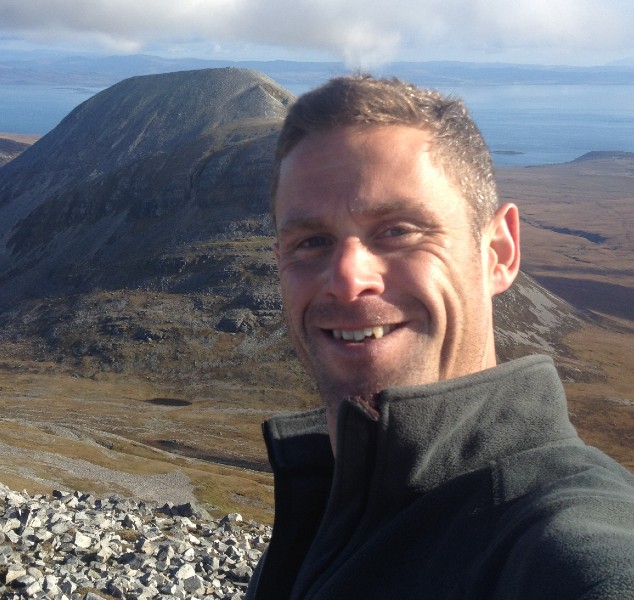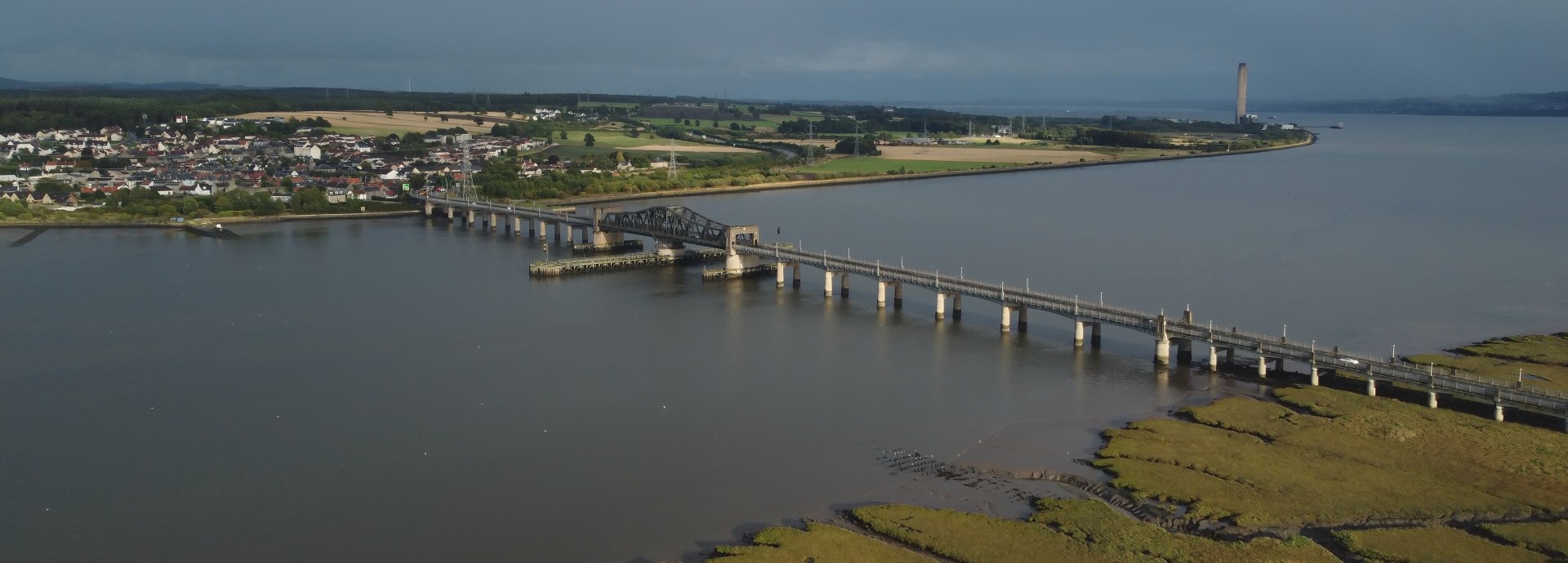A pioneering environmental recovery project that will turn the Forth Valley into a living laboratory is being launched to an international audience today [November 9] at global climate summit COP26.
The Forth Environmental Resilience Array (Forth-ERA), directed by the University of Stirling, will use state-of-the-art technology – including sensors, satellites, artificial intelligence and digital fabric, such as 5G – to monitor the Firth of Forth catchment in real time. It will collate environmental data, including important information on water quality and quantity, and use the intelligence gathered to drive clean growth and support the region in its transition to net zero.
The data collected will be made available to communities, agencies, businesses and organisations, to help support decision making, create jobs and support the new infrastructures required for a net zero economy.

Professor Andrew Tyler holds multi-sensor equipment by the Kincardine Bridge, Firth of Forth
Scotland Hydro Nation Chair, Professor Andrew Tyler, of Scotland’s International Environment Centre at the University of Stirling, is leading the project, which is funded through the Stirling and Clackmannanshire City Region Deal. He said: “We are already feeling the effects of climate change through water, in flood and drought, but water offers solutions too, in resilience to extreme events, and in carbon capture and emissions reduction.
“Forth-ERA will provide a platform for green economic recovery by providing business, industry and regulators with access to live data, analytics, and dynamic monitoring capabilities, helping to inform agile decision making and an informed approach to cleaner, greener ways of working.
“Through driving business innovation and helping stakeholders to model the impact of climate change and foresee the consequences of interventions, Forth-ERA will help to put the environment the heart of decision making.”
Forth ERA Demonstrator
Working alongside data platform 3DEO, BT supported the technical design and deployment of a test site in the first phase of project. The Forth-ERA Demonstrator saw sensors placed at seven test sites in the River Leven catchment to establish the capabilities of real-time environmental data, the digital fabric solution, including 5G, and visualisation tools to support place-based transformation.
Alan Lees, BT’s Enterprise business Scotland director, said: “BT is excited to be the technology partner in such an important initiative and to lead the deployment of this ‘digital fabric’ initiative. It uses technology to provide the insight to make environmental information available to individuals, businesses, communities and policy makers. With BT’s aim to connect for good, we’re proud to play a leading part in this project.”
Applications of Forth ERA
The technology enabling Forth-ERA can now be applied in a wide range of settings and sectors, including agriculture, fisheries, the food and drink industry, shipping and navigation, biodiversity and conservation, oil and gas, renewables and low carbon, green tourism, heritage, local and national government and public health.

Imagery from the 3DEO platform showing how the Forth ERA sensor control appears
The Scottish Environmental Protection Agency (SEPA) is already working with the Forth-ERA team on several uses of the technology, including the potential for systems to support monitoring and predicting bathing water quality in real time, and to establish early flood warning and monitoring.
Terry A'Hearn, Chief Executive at Scottish Environment Protection Agency (SEPA) said: “The climate emergency is accelerating and there is a real urgency to act. With the eyes of the world on Scotland for COP26, this collaborative innovation work through Forth-ERA is a hugely exciting initiative that brings together organisations, including SEPA and our Leven Programme Partnership, from across the public, private and academic sectors to tackle real life environmental challenges affecting the Forth Catchment.
“The data being produced through Forth-ERA is offering a unique perspective into the intricate relationships between water and its use or impact on multiple scales. The additional information and collaboration the project fosters will help us to maximise environmental solutions for an increasingly volatile climate.”
Scottish Water will use Forth-ERA’s capabilities to monitor water quality in drinking water reservoirs, while the team will also be working with NatureScot and the UK Centre for Ecology and Hydrology to explore how the technology can be used to measure the benefits of projects to restore peatlands and rivers.
A range of businesses and industry can benefit from the technology – including those seeking to address challenges posed by the transition to net zero – by modelling the impacts of interventions, for example, and going beyond environmental compliance.
Drinks giant Diageo is working with Forth-ERA to monitor temperature and conductivity changes in the water around their Cameronbridge distillery, in Leven, Fife, to inform their operations and understand their local environment.

Environmental Manager at Diageo
Both our Cameronbridge distillery and Leven packaging plant are located within the Leven catchment, which drains directly into the Forth, so we have a responsibility to understand how we fit into the Forth ecosystem. We also believe in working with others to make sure we have a positive social and environmental impact.
Environmental Manager at Diageo, Lee Oliver, said: “As a major employer in the area, with a reputation for pioneering sustainability best practice, Forth-ERA seemed like a good fit for us. Both our Cameronbridge distillery and Leven packaging plant are located within the Leven catchment, which drains directly into the Forth, so we have a responsibility to understand how we fit into the Forth ecosystem. We also believe in working with others to make sure we have a positive social and environmental impact.”
Working together
Forth-ERA will support the goals of the Scotland Hydro Nation Chair – hosted by the University of Stirling, led by Professor Tyler and funded by Scottish Water – which aims to bring Scotland’s water sector together to drive us to net zero and beyond.
Forth-ERA is a flagship project of Scotland’s International Environment Centre at the University of Stirling, which is funded by the UK and Scottish Governments as part of the Stirling and Clackmannanshire City Region Deal, with additional funding leveraged through private investment. The Centre brings together academic researchers and external partners from industry, government, regulators and regional stakeholders.

